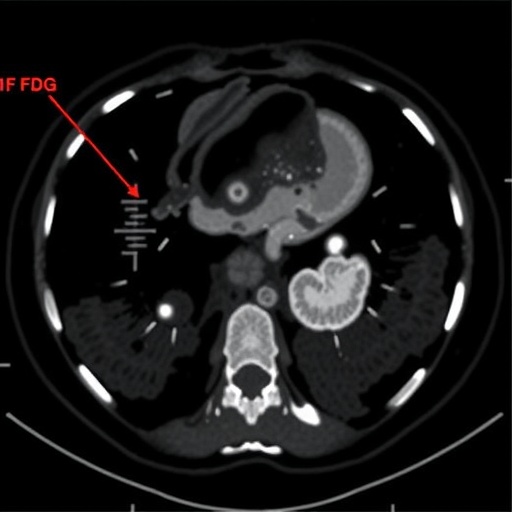
In the relentless pursuit to unravel the complexities of prostate cancer, a significant breakthrough has emerged from recent scientific investigations that could redefine the understanding of therapeutic resistance and metastatic progression. The study of microRNAs (miRNAs), small non-coding RNA molecules known to regulate gene expression at the post-transcriptional level, has illuminated their influential role in mediating resistance mechanisms within prostate cancer cells. These insights pave the way for advanced targeted therapies that could outmaneuver the cancer’s adaptive survival strategies and thwart its invasive spread.
Prostate cancer remains one of the leading causes of cancer-related morbidity and mortality in men worldwide. Despite advances in early detection and treatment, therapeutic resistance, particularly to androgen-deprivation therapy (ADT) and chemotherapy, often undermines clinical success. This resistance leads to disease progression, increased metastasis, and ultimately, treatment failure. The intricate interplay of molecular mechanisms driving this resistance has been a formidable challenge. However, miRNAs have now come to the forefront as key regulators modulating multiple pathways implicated in prostate cancer pathophysiology.
miRNAs function by binding to complementary sequences on messenger RNAs (mRNAs), repressing their translation or leading to their degradation. This regulatory capacity allows them to fine-tune cellular processes such as proliferation, apoptosis, differentiation, and stress responses. In prostate cancer, dysregulated miRNA expression profiles have been consistently observed, correlating with disease progression and response to therapy. Some miRNAs act as oncogenes (oncomiRs), promoting malignancy by suppressing tumor suppressor genes, while others act as tumor suppressors themselves.
The current research delves into the miRNA-mediated mechanisms that underpin resistance to conventional treatments. One emerging theme is the role of miRNAs in modulating androgen receptor (AR) signaling—the main driver of prostate cancer cell growth—especially in castration-resistant prostate cancer (CRPC), an advanced and treatment-refractory state of the disease. Aberrant expression of specific miRNAs can alter AR splice variants or co-regulator expression, effectively sustaining AR activity despite androgen deprivation.
Moreover, miRNAs influence critical pathways beyond AR, including those involved in DNA damage repair, epithelial-mesenchymal transition (EMT), and apoptosis evasion. For instance, certain miRNAs enhance DNA repair capabilities in tumor cells, rendering them less susceptible to genotoxic agents such as radiation and chemotherapeutic drugs. Others promote EMT, a plasticity program through which cancer cells gain increased motility and invasiveness, facilitating metastatic dissemination.
This multifaceted functionality presents miRNAs not only as biomarkers for disease prognosis and treatment response but also as compelling therapeutic targets. Recent advances in molecular therapeutics allow for the modulation of miRNA activity through mimics or inhibitors (antagomirs), offering precision tools to restore the balance of oncogenic and tumor-suppressive miRNAs within tumor microenvironments. These approaches hold the promise of overcoming drug resistance by dismantling the molecular defenses erected by malignant cells.
A particularly exciting aspect highlighted by researchers is the contribution of extracellular vesicles (EVs), such as exosomes, in transporting miRNAs from tumor cells to the surrounding stroma and distant tissues. This intercellular communication mechanism facilitates the remodeling of microenvironments to favor tumor survival and metastasis. Understanding and intercepting EV-mediated miRNA transfer could, therefore, curtail the metastatic cascade central to prostate cancer lethality.
Beyond therapeutic implications, miRNA signatures detectable in circulating fluids like blood and urine open avenues for non-invasive diagnostics. Liquid biopsies leveraging these molecular fingerprints can monitor disease dynamics in real-time, allowing clinicians to adapt treatment regimens proactively and detect emerging resistance before clinical relapse manifests.
The integration of high-throughput sequencing technologies and bioinformatics has accelerated the identification and functional characterization of cancer-associated miRNAs. This comprehensive molecular mapping facilitates the stratification of patients based on miRNA expression profiles, guiding personalized medicine initiatives. Future clinical trials incorporating miRNA-based interventions will be critical in validating their efficacy and safety in diverse patient populations.
Despite these promising developments, challenges remain in translating miRNA research into routine clinical practice. Delivery systems for miRNA therapeutics need refinement to ensure specificity, stability, and minimal off-target effects. Additionally, the intricate redundancy and cross-talk among miRNAs and their targets necessitate nuanced strategies capable of achieving therapeutic balance without disrupting normal cellular functions.
Nevertheless, the expanding repertoire of miRNA knowledge enriches the arsenal against prostate cancer, transforming previously opaque resistance mechanisms into decipherable and druggable pathways. By embracing miRNA biology, oncology is poised to usher in an era where precision therapies can outwit cancer’s adaptability, reduce metastatic burden, and dramatically improve patient outcomes.
In conclusion, the elucidation of miRNA-mediated resistance mechanisms in prostate cancer marks a watershed moment in cancer biology and therapeutics. These tiny RNA molecules wield outsized influence over tumor behavior, representing both the Achilles’ heel and a therapeutic goldmine in the battle against prostate malignancies. Continued interdisciplinary research and clinical innovation centered around miRNAs will be crucial in fulfilling the promise of targeted, resilient, and effective prostate cancer treatments.
Subject of Research: miRNA-mediated resistance mechanisms in prostate cancer and their implications for targeted therapy and metastatic progression.
Article Title: miRNA-mediated resistance mechanisms in prostate cancer: implications for targeted therapy and metastatic progression.
Article References:
Mostafa, M.M., El-Aziz, M.K.A. & Ellakwa, D.ES. miRNA-mediated resistance mechanisms in prostate cancer: implications for targeted therapy and metastatic progression. Med Oncol 42, 454 (2025). https://doi.org/10.1007/s12032-025-03006-7
Image Credits: AI Generated
Tags: advances in prostate cancer treatmentandrogen-deprivation therapy challengescancer therapy and miRNAsgene expression regulation in prostate cancermetastatic progression in prostate cancermiRNA resistance in prostate cancermolecular mechanisms in prostate cancernon-coding RNA in cancer researchprostate cancer morbidity and mortalityrole of microRNAs in cancertargeted therapies for prostate cancertherapeutic resistance mechanisms




